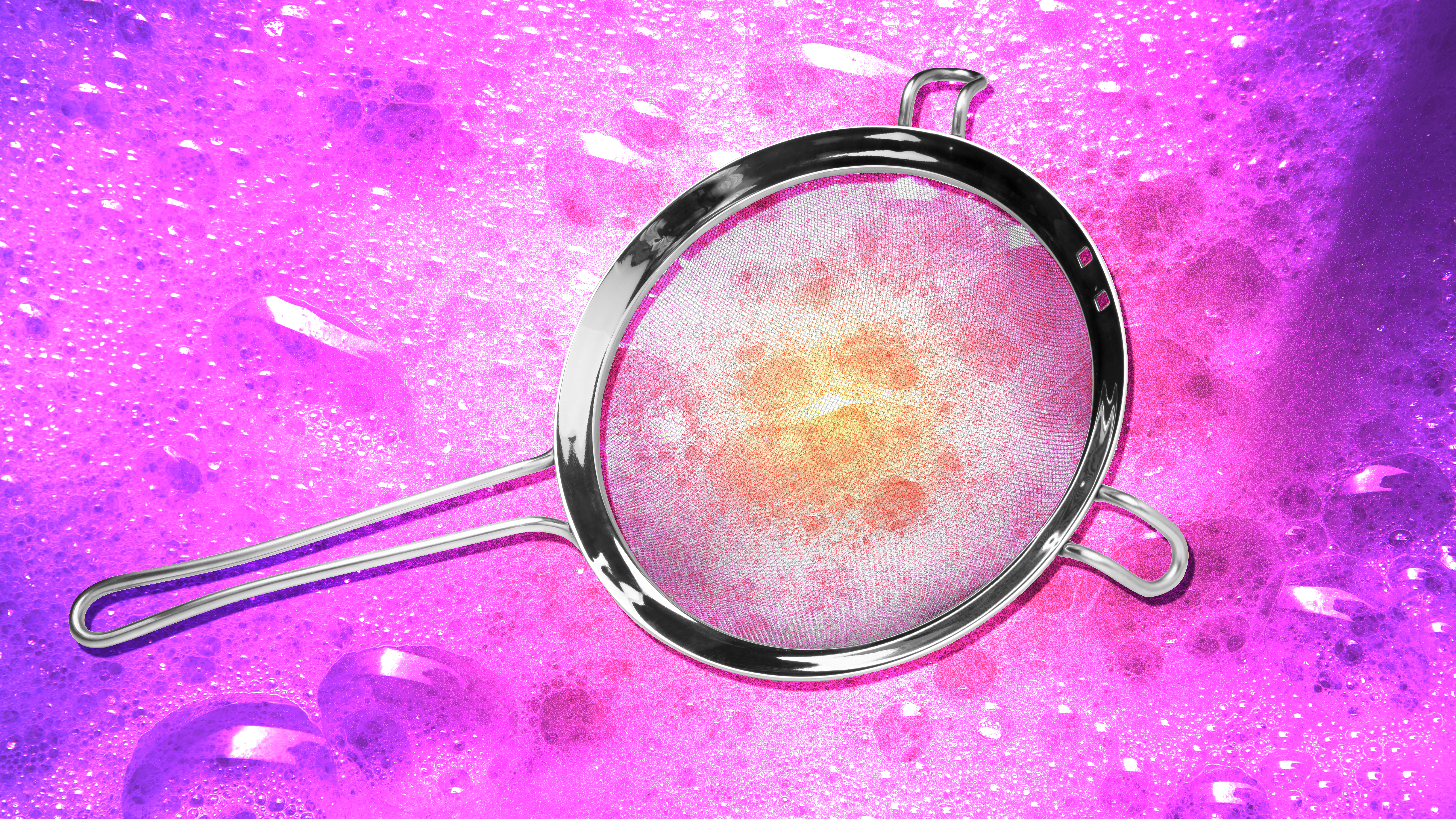What's The Best Way To Clean A Sieve?
In the kitchen, some things are harder to clean than other things. The garlic press. The cheese grater. The lemon squeezer. But the worst of all may be the sieve. That mesh-filled colander is designed to strain solids from your sauce or broth, and plenty of it gets stuck in the extremely fine mesh. So how in the world are you supposed to clean that?
"The first and foremost trick," according to Lisa McManus, executive editor of tastings and testings at America's Test Kitchen, is that you've got to clean it right away. "The more it hardens, the worse it will be." McManus encourages, "you gotta get in there and scrub."
It helps to have a good brush at the ready, and a "mild dish soap with just regular warm water," says Jennifer Hanley, technical support at sieve manufacturer Gilson Company. "No harsh cleaners or bleach." The Gilson website recommends brushing "the underside of the wire cloth in a circular motion, exerting light pressure to dislodge near-size particles," but "be gentle so you don't deform the frame."
One kitchen specialty shop we talked to suggested a power washer, which is also a handy thing to have available. But for the rest of us, you just have to scrub carefully before the dishwasher cycle. Says McManus, "running through dishwasher after that usually works."
Naturally, it helps to have a sieve that you can run in the dishwasher. Most can be cleaned there safely, like the ones on the Williams Sonoma website, where the only suggested care is just listed as "dishwasher safe." McManus describes a test they ran a few years ago at America's Test Kitchen, where one sieve actually was not safe for the dishwasher. The test involved using the sieves to sift bran out of whole wheat flour. She notes, "We also did a sauce with raspberry coulis pushing with a spoon to get it through." The sieve ideally would trap the tiny raspberry seeds, making for a "nice smooth sauce."
American's Test Kitchen being what it is, the exercise looked at "how structural the mesh was, did it get out of shape while you're scraping it." Some of us have endured the horror the having the mesh tear away from the outside rim. "Quality is different in different brands," McManus notes, so that "it won't behave the same way."
Even if your sieve holds together, if you don't clean properly, it can make your sieve practically useless, as if "stuff dries in there, then the tiny holes get blocked." McManus says that this isn't as dangerous from a bacterial standpoint as it is from a flavor one: "with flavor transference, you don't want raspberry seeds in your chicken" or excess vegetable fibers, for example, in your gazpacho.
So, we're back where we started: Soak that sieve right away, rinse, and then scrub. Do so from the underside of the sieve in a circular fashion. Then submerge again in soapy water to make sure that all the holes are clear. But remember, scrubbing too fiercely with a harsh cleaner, causing the mesh to tear, essentially leaves a giant fairway for particles to slip through. So take care—"Don't force embedded particles out of the openings," cautions Gilson—and set in the dishwasher to be on the safe side.
Then your sieve should be all set for filtering your chicken stock or rinsing the starch from rice. But if you have any advice for cleaning out that garlic press, we're all ears.
